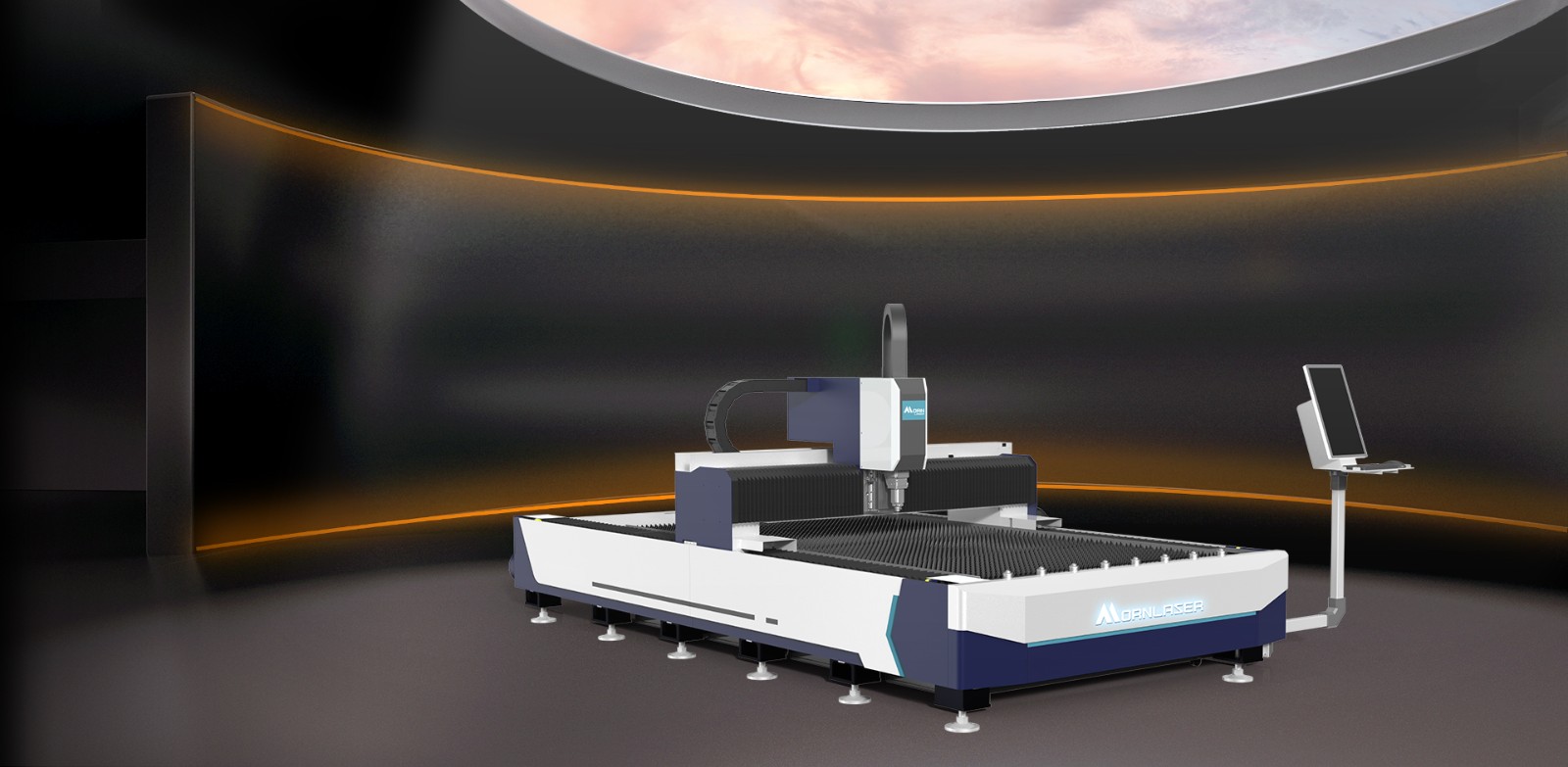-
Product
-
Fiber laser cutting machine
-
Profile Steel/ H-Beam Laser Cutter
high efficiency | high-performance | high quality -
Full Cover Fiber Laser Cutting Machine
supreme configuration | high precision | safe & pollution-free -
Sheet fiber laser cutting machine
tailor-made machine | efficiency boost -
Fiber Laser Bevel Cutting Machine
one-shot bevel | efficiency boost | streamlined process -
High precision fiber laser cutting machine
High precision | small footprint | fully enclosed -
Four-chuck Tube Cutting Lasers
truly zero-tailing | low cost per part | auto loader -
Three-chuck Tube Laser Cutting Machine
top production output | low cost per part | extremely short tailing -
Two-chuck Tube Laser Cutting Machine
top production output | low cost per part | extremely short tailing -
Full Enclosed Fiber Laser Cutting Machine
Integrated design saves installation time and shipping costs. - flexible processing | continuous cutting | efficient production
-
Fully Automatic Loading & Unloading Laser Cutting Production Line
intelligent production | optimizing factory space | reduce labor costs -
Sheet and Tube Fiber Laser Cutting Machine
supreme cost-effectiveness | dual-use laser | space-saving
-
-
Fiber laser welding machine
-
Air-cooled Portable Laser Welding Machine
more flexibility | easy to use | cost effective -
Automatic laser welding machine
fine welding seam | boosted efficiency -
Integrated fiber laser welding machine
instant welding | easy to operate & move -
Handheld fiber laser welding machine
long distance welding | multi-welding modes
-
- Fiber laser cleaning machine
- Bending Machine
-
Fiber laser cutting machine
- Solutions
- Why Morn Laser
- Price
- Contact
- VR
Menu
X- home
-
Product >
-
Common Mistakes to Avoid When Using CNC Laser Cutters
2024-11-19CNC (Computer Numerical Control) laser cutting machines are widely used in modern manufacturing due to their high precision and efficiency. However, to fully leverage their performance and ensure safety, operators need to avoid common mistakes. This article will detail the most frequent errors to avoid when using CNC laser cutting machines, helping users better manage and operate the equipment.
1. Ignoring Safety Procedures
Common Mistakes:
Not Wearing Protective Gear: Operators must wear appropriate protective eyewear, gloves, and other necessary personal protective equipment when operating CNC laser cutting machines.
Not Following the User Manual: Each laser cutting machine comes with a detailed user manual that includes crucial safety information and operating instructions. Ignoring these guidelines can lead to accidents.
Correct Practices:
Strictly Follow Safety Protocols: Ensure all operators are trained in safety procedures and follow the user manual strictly.
Regularly Inspect Equipment: Regularly check the safety devices and protective features of the laser cutting machine to ensure they are functioning properly.
2. Incorrect Material Preparation
Common Mistakes:
Improper Material Placement: Materials that are not securely fixed or placed on the worktable can shift during the cutting process.
Unclean Material Surface: Dust, oil, or other contaminants on the material surface can affect cutting quality and results.
Correct Practices:
Properly Secure Materials: Use clamps or other securing devices to ensure materials are firmly fixed on the worktable.
Clean Material Surface: Thoroughly clean the material surface before cutting to remove any contaminants that could affect cutting quality.
3. Improper Parameter Settings
Common Mistakes:
Incorrect Power Settings: Setting the power too high or too low can result in overheating or incomplete cuts.
Incorrect Cutting Speed: Cutting too fast or too slow can impact cutting quality and efficiency.
Correct Practices:
Adjust Parameters Based on Material Type and Thickness: Refer to the recommended parameters in the user manual and adjust them according to the actual material being used.
Perform Test Cuts: Before starting the main cutting job, perform test cuts to verify that the parameter settings are appropriate.
4. Neglecting Maintenance and Care
Common Mistakes:
Not Cleaning the Machine Regularly: Dust and dirt inside and outside the laser cutting machine can affect its performance and lifespan.
Not Replacing Consumables Timely: Wear and tear on components like the laser head and lenses can degrade cutting performance and need to be replaced regularly.
Correct Practices:
Regularly Clean the Machine: Follow the user manual's recommendations for cleaning the internal and external parts of the laser cutting machine.
Regularly Check and Replace Consumables: Regularly inspect components like the laser head and lenses for wear and replace them as needed.
5. Lack of Training and Experience
Common Mistakes:
Operating Without Proper Training: New operators who start using the equipment without adequate training are prone to making mistakes.
Ignoring Experience Sharing: Operators lacking experience may not identify and resolve issues promptly, affecting production efficiency.
Correct Practices:
Provide Adequate Training: Ensure all operators receive thorough training to familiarize themselves with the equipment's operation and maintenance.
Encourage Experience Sharing: Establish a mechanism for experienced operators to mentor new ones, collectively improving operational skills.
Conclusion
CNC laser cutting machinesare highly efficient production tools, but avoiding common mistakes is crucial for optimal performance and safety. By strictly adhering to safety protocols, preparing materials correctly, setting parameters appropriately, maintaining the machine regularly, and providing adequate training, users can maximize the machine's performance and ensure safe and efficient production.
- Office Address:
- 17F, Building 5, Qisheng Mansion High-Tech Zone, Jinan, Shandong 250101, China
- Email: info@mornlaser.com
- Mobile/WhatsApp/WeChat: +86 151 6916 6350
CONTACT USCopyright © 2008-2022 Morn Laser All Rights Reserved.![]() Get a Quote
Get a Quote
![]() Get a Quote
Get a Quote
Cookies
We use cookies to improve our services and remember your choice for future visits. By clicking "Accept cookies", you consent to the use of cookies on this website.
Read our Privacy Policy
Get a Quote x
![]()








